The Work of Art: The Federal Art Project, 1935-1943 at the Saint Louis Art Museum, is an Exhibition on display through April 13, 2025 of various works of art created by African American, Asian American and Female artists under the Federal Art Project. Created as part of Franklin D. Roosevelt’s New Deal, the program put thousands of artists to work creating art for public buildings during the depression.
Pulled from the museum’s permanent collection of Works Progress Administration (WPA) holdings, 58 works of art are displayed in two galleries, Gallery 235 and the Sidney S. and Sadie M. Cohen Gallery 234. For just 58 individual works, the exhibition manages to capture not only the spirit of the Federal Art Project, but also the mechanics and just how wide the net was cast to include all and everyone who had something to contribute. In doing so, stories and works from marginalized populations had been preserved and made available to tell one aspect of the New Deal era, the WPA and the Federal Art Project.
Organized geographically, the exhibition highlights both the breadth of the program across the country, and the diversity of project artists, by ethnicity, sex, age and even artistic ability. Even the mediums used varied from paint to charcoal, linocut, crayon lithograph, water color and wood carving. The exhibition was curated to “celebrate the fundamental idea of art being made by and for everyone”. Perhaps no display in the exhibit exudes this more than the Children’s Art Display of 15 works completed by young Black students at the LeMoyne Federal Art Center in Memphis, from 1938 to 1941. The works are located in Gallery 235 along the wall furthest from the Main Hall. Stacked in columns of three, the bright colors and varied themes pull you into the collection.
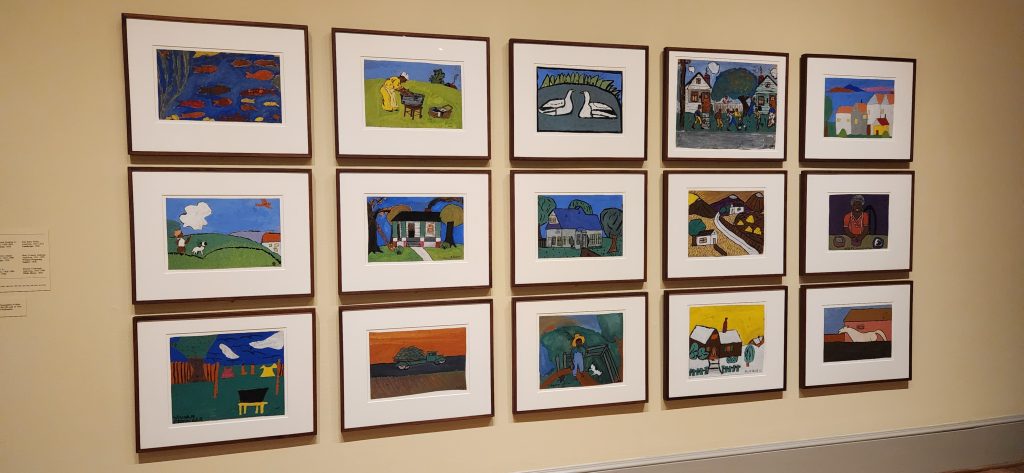
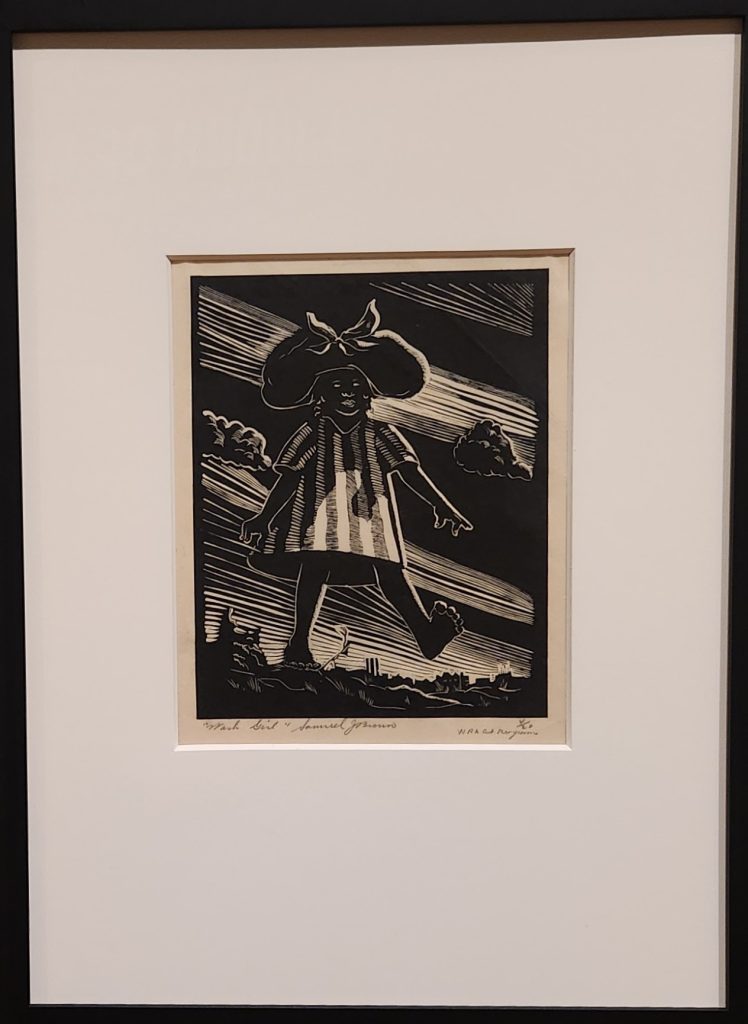
Of greater interest, however are the works completed by more accomplished artist in various mediums. I was struck by both the quality of work and the uniqueness of each individual piece. Moreover, the subject matter exudes individuality and often social commentary, such as the piece Wash Girl by Samual Joseph Brown Jr. , a linocut cir 1938 in black and white (not the artist’s usual colorful watercolor works) that seems to make a statement on the burden of black women in society at the time.
Many other works, however, are less about social commentary and more about depicting contemporary scenes from the artists experience, such as Trolley Car, a wood engraving circ 1936-41 by Salvatore Pinto, an Italian American artist. As interesting as the scene is, more so is the method of production by hundreds of tiny, precise cuts.
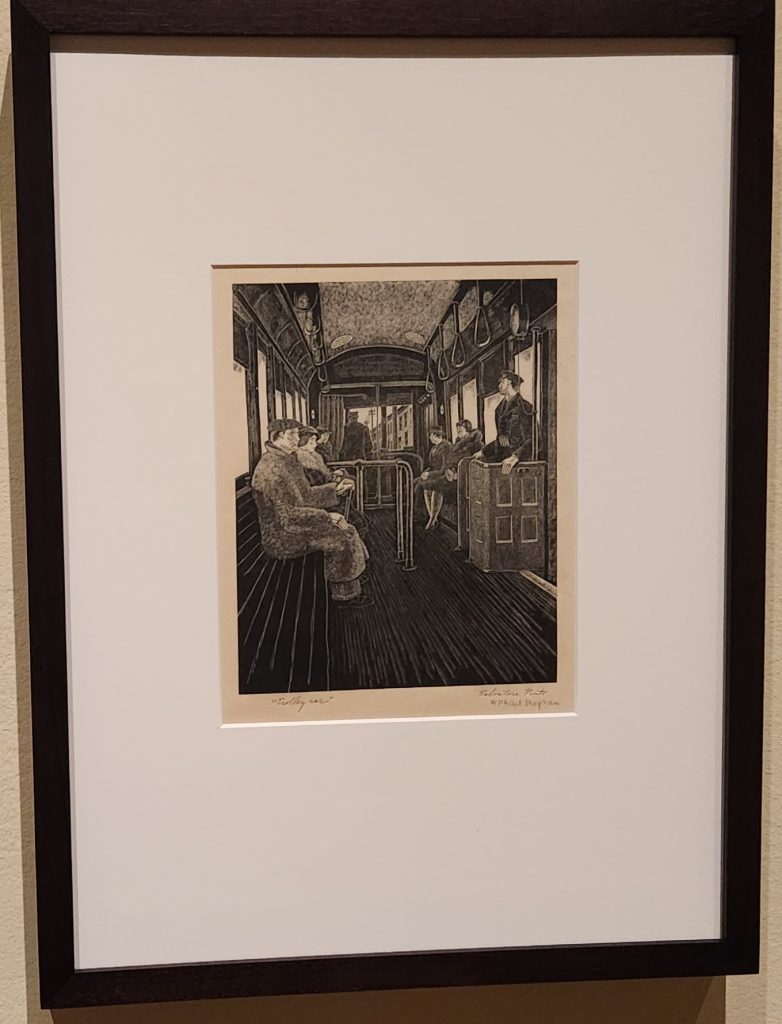
Much of the work reflect the art and style of the WPA, in terms of the heroic nature of the human spirit, our industrious nature and the progress of man. Reminiscent of Soviet Era works meant to inspire and uplift, works on display such as Raymond Steth’s Beacon of Defense, 1941showcase America’s industrial might transferred to its military strength.
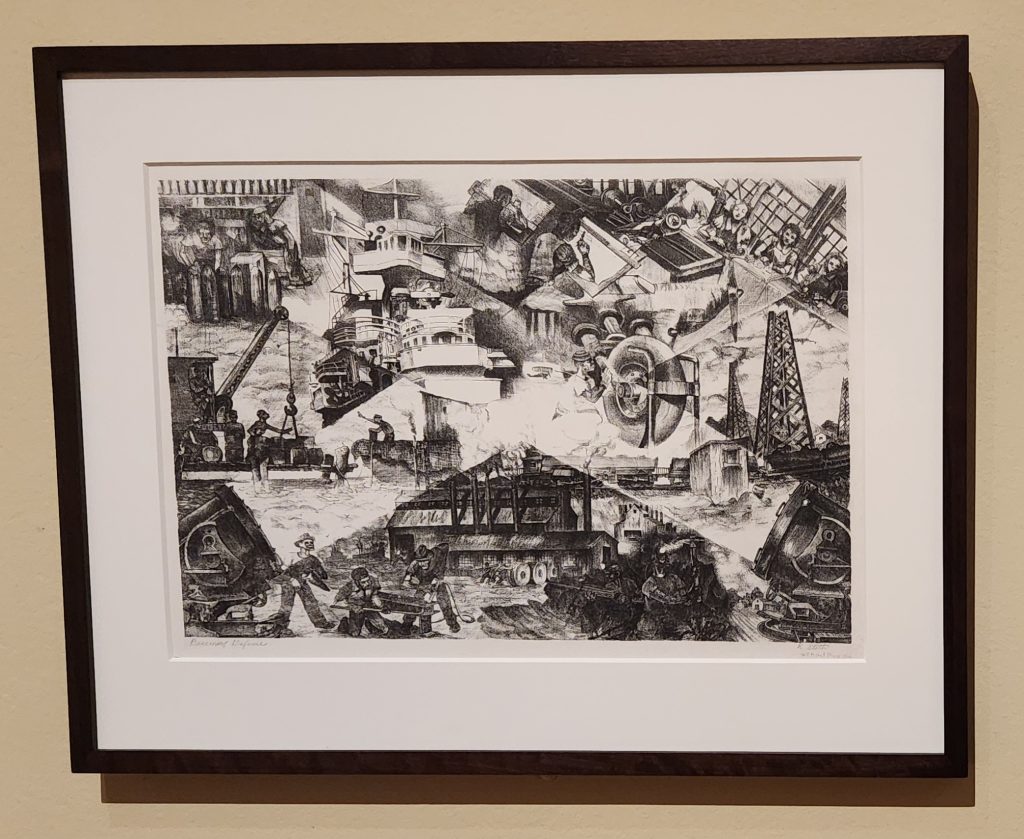
The art is presented by City, and works from Memphis, Philadelphia, Milwaukee, Washington D.C., New Orleans, Cleveland, Boston, Chicago, New York City and the west coast cities of San Francisco and Seattle are included. Saint Louis gets a special treatment, with an homage to the People’s Art Center including, in addition to art, photographs and programs from the Center.
For the most part, the galleries are devoid of furniture except for two benches in 234 and a two-sided kiosk in each space, each highlighting an aspect of the Federal Art Program and a special piece of art on each side, such as Selma Day’s Mural Study, 1936 or 1937, an oil on panel presentation of the nursey rhyme, “Little Boy Blue”.
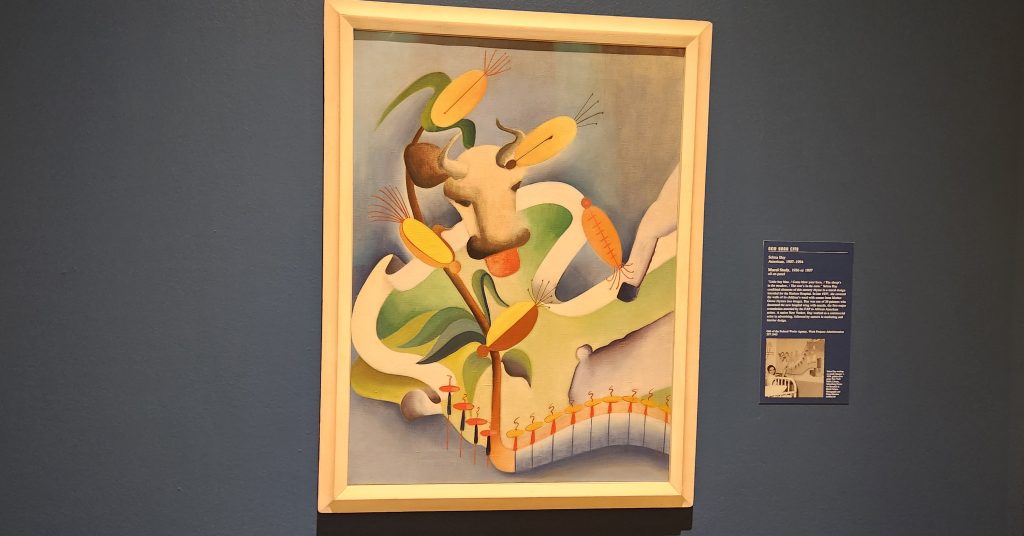
Taking advantage of Friday’s free entrance to all exhibitions, I visited on January 31st, 2025, to a bustling but not overcrowded museum. Free parking is available and if the lots are filled, additional free parking is located on the streets surrounding the museum. The exhibition galleries are located to the rear right of the Main Hall as you enter the Museum. Each gallery space is enclosed and the works presented along the four walls of each gallery, with a center kiosk in each room highlighting both the exhibit and the Federal Art Project. There is a companion website (https://www.slam.org/exhibitions/the-work-of-art-the-federal-art-project-1935-1943/) which includes a description of the program, transcripts of the audio guide available in both galleries, as well as biographies of the co-curators and more in-depth descriptions of the various works. The website, however, does not adequately represent the full breadth of the works presented in the galleries. I was impressed with the pieces on display, and admittedly, did not have a good understanding of what was being presented going into the exhibit, but left with a desire to learn more about this aspect of the Federal Art Project.
The exhibit was curated by Clare Kobasa, associate curator of prints, drawings and photographs, and Amy Torbert, the Andrew W. Mellon Foundation Associate Curator of American Art. It runs through April 13, 2025. After touring their well-curated exhibit, you may feel like me and want to explore additional Federal Art Project works. I encourage you to do so.
Leave a Reply